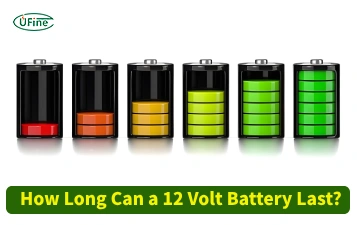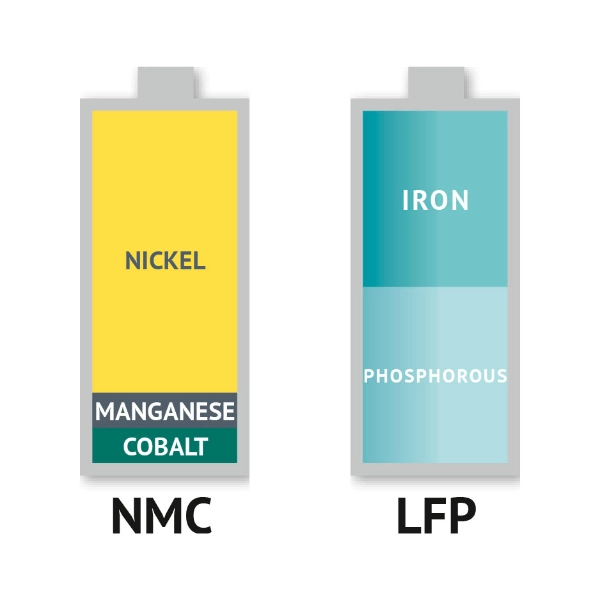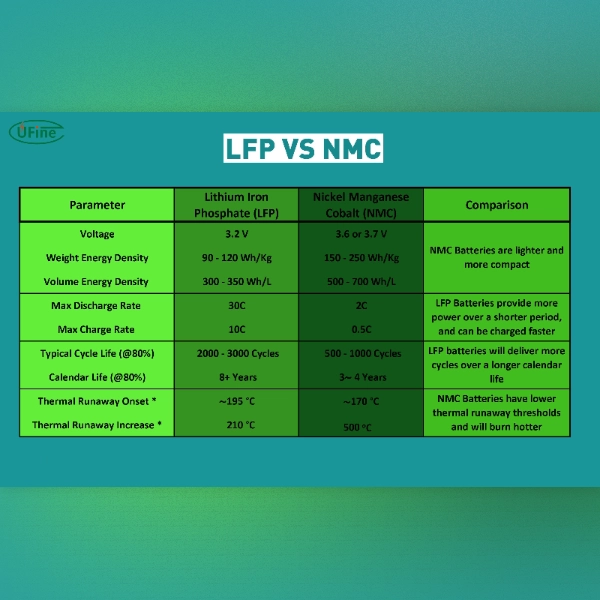Regarding energy storage, two popular battery technologies have gained significant attention: LFP (Lithium Iron Phosphate) and NMC (Nickel Manganese Cobalt) batteries. These advanced systems have revolutionized various industries, from electric vehicles to renewable energy storage. This article will explore the differences between LFP and NMC batteries, exploring their unique characteristics, advantages, and downsides.
Part 1. What is an LFP battery?
LFP batteries, also known as lithium iron phosphate batteries, are rechargeable lithium-ion batteries that utilize lithium iron phosphate as the cathode material. This chemistry offers several distinct advantages over other lithium-ion battery types.
What are the advantages and downsides of LFP?
장점:
- Longer lifespan: LFP batteries typically last longer than other lithium-ion batteries, with some models capable of enduring thousands of charge cycles, making them cost-effective over time.
- Enhanced safety: They have a higher thermal stability, reducing the risk of overheating and fire hazards.
- Fast charging capabilities: LFP batteries charge quickly, benefiting various applications, including electric vehicles.
- Wide operating temperature range: LFP batteries perform well in hot and cold environments, making them versatile for different climates.
- Environmental friendliness: LFP batteries are more eco-friendly because they contain no cobalt, a material often associated with environmental and ethical concerns in battery production.
Downsides:
- Lower energy density: Compared to other lithium-ion batteries, LFP batteries have a lower energy density, meaning they store less energy per unit volume or weight.
- Reduced specific power: While they can handle fast charging, LFP batteries may have limitations in delivering high power outputs, impacting performance in particular applications.
- Limited availability: LFP batteries may not be as widely available as other lithium-ion batteries, affecting accessibility and pricing in some markets.
- Larger size and weight: Due to their lower energy density, LFP batteries may require larger dimensions and heavier weights to achieve comparable energy storage capacities, which could be a drawback in space-constrained applications.
- Voltage limitations: LFP batteries have a lower nominal voltage than other lithium-ion chemistries, which may require device design or usage adjustments.
Part 2. What is an NMC battery?
NMC batteries, short for Nickel Manganese Cobalt batteries, are another type of lithium-ion battery widely used in various industries. They utilize a combination of nickel, manganese, and cobalt for their cathode material, offering a different set of advantages and considerations.
What are the advantages and disadvantages of NMC batteries?
장점:
- High energy density: NMC batteries offer a high energy density, meaning they can store much energy in a relatively small space or weight.
- Improved lifespan: NMC batteries have a longer lifespan than other lithium-ion batteries, making them suitable for long-term use in various applications.
- 다용도성: Manufacturers can tailor NMC batteries to meet specific energy and power requirements, making them suitable for various applications, from electric vehicles to consumer electronics.
- Fast charging capabilities: NMC batteries charge quickly, allowing for shorter charging times and improved user convenience.
- Enhanced stability: NMC batteries exhibit good thermal stability, reducing the risk of overheating and improving overall safety.
단점:
- Cost: NMC batteries can be more expensive to manufacture than other lithium-ion chemistries, potentially leading to higher product costs for consumers.
- Limited lifespan at high temperatures: While NMC batteries generally have a good lifespan, exposure to high temperatures can accelerate degradation, reducing overall battery longevity.
- Safety concerns: Although NMC batteries are generally considered safe, there have been thermal runaway and safety issues, primarily when damaged or improperly handled.
- Environmental impact: The production of NMC batteries involves extracting and processing raw materials, which can have ecological implications if not managed responsibly.
- Voltage fade: NMC batteries may experience voltage fade over time, leading to a gradual decrease in capacity and performance, especially after repeated charging cycles.
Part 3. LFP vs. NMC Battery: comparison
Here are some typical comparisons to help you understand the differences between these two battery technologies:
안전
LFP batteries have a higher safety profile due to their thermal stability and resistance to thermal runaway, making them a more secure choice for applications where safety is paramount.
Cycle Life
LFP batteries exhibit a longer cycle life than NMC batteries, making them suitable for extensive and prolonged applications.
에너지 밀도
NMC batteries offer a higher energy density, allowing them to store more energy per unit volume or weight, which is advantageous for applications requiring longer-lasting power.
Power Density
LFP batteries have a higher power density, enabling them to deliver a significant amount of power quickly and making them suitable for applications that require rapid energy discharge.
Temperature Tolerance
LFP batteries have a wider temperature range tolerance, allowing them to operate efficiently in harsh environments with extreme temperatures.
Power Capability
NMC batteries excel in power capability, delivering high power output and charging speed performance. They are ideal for applications requiring quick charging or high-power delivery.
Application Suitability
Many prefer LFP batteries in applications where safety and long cycle life are critical, such as energy storage systems and stationary applications. On the other hand, manufacturers commonly use NMC batteries in electric vehicles, portable electronics, and other applications that prioritize energy density and power capability.
4부. 자주 묻는 질문
-
Is LFP more expensive than NMC?
LFP batteries are generally less expensive than NMC batteries due to their more straightforward construction and fewer costly materials. -
Is LFP safer than NMC?
Yes, LFP batteries are often considered safer than NMC batteries due to their higher thermal stability, which reduces the risk of overheating and fire hazards. -
Why is NMC over LFP?
Users prefer NMC batteries over LFP batteries for their higher energy density, which allows for more energy storage in a smaller space, making them suitable for applications where space is limited. -
Do LFP batteries last longer?
Yes, LFP batteries generally last longer than NMC batteries. An LFP battery can typically endure around 2000 to 5000 charge cycles, whereas an NMC battery usually lasts around 500 to 1000. -
What is the lifespan of an NMC battery?
The lifespan of an NMC battery is typically around 500 to 1000 charge cycles.
관련 태그:
더 많은 기사

12 Volt Batteries: How Long Can They Really Last?
Discover how long a 12-volt battery lasts, factors affecting its lifespan, and tips to extend its life.
Upgrade Your Drill Battery to Lithium Batteries
Discover why switching from Ni-Cd to li batteries for your drill is essential. Learn about battery types, comparisons, and how to choose the best drill battery.
Everything You Need to Know About Group 26 Batteries
Discover the ins and outs of Group 26 batteries, including types, dimensions, prices, and maintenance tips. Learn where to buy the best Group 26 battery.
Recommended 10 Leisure Batteries for Motorhomes or Caravans
Traveling in a motorhome or caravan? A good leisure battery is essential. Avoid power issues with our guide to the top 10 best leisure batteries for this year.
Top 10 Truck Battery Options to Keep You Rolling Strong
Struggling with weak truck batteries? Avoid breakdowns with our guide to the top 10 truck batteries, ensuring durability and high performance for any journey.





